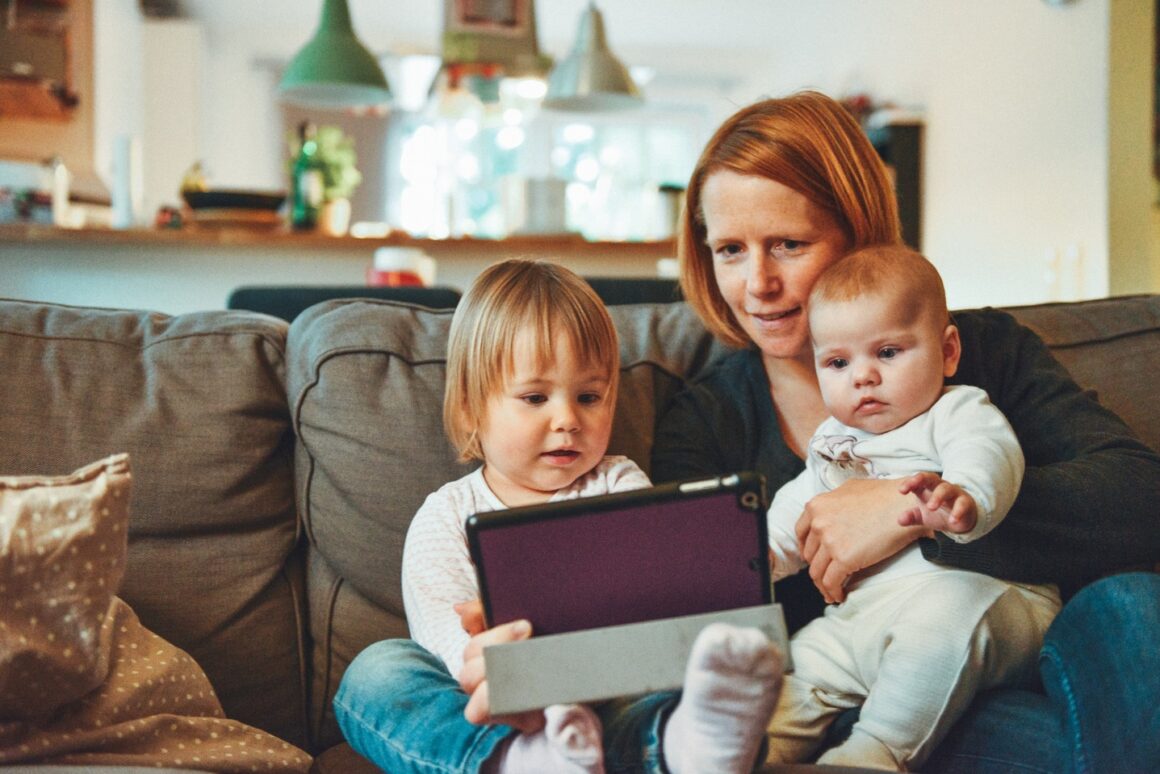I. Introduction
In today’s rapidly evolving digital landscape, the role of parental controls has become increasingly vital. As technology becomes more ingrained in our daily lives, the need to safeguard our children’s digital experiences is more pressing than ever. Parental controls are not just tools; they are essential components of modern parenting that help navigate the complex digital world safely and responsibly.
The risks associated with unrestricted internet access for children are numerous and varied. From exposure to inappropriate content to the dangers of online predators, the internet, without boundaries, can be a perilous place for young minds. The developmental impact of excessive screen time and the potential for cyberbullying are additional concerns that make the case for robust parental controls compelling.
This blog post is designed to be your go-to guide in understanding and implementing effective parental controls on various devices. We will delve deep into setting up parental controls on iPhones and computers, two of the most widely used digital devices in households. Whether you are a tech-savvy parent or new to the world of digital parenting, this post aims to equip you with the knowledge and tools necessary to ensure your child’s safety online. We will explore various aspects of “Parental Controls,” tailor them for devices like the “iPhone,” and extend these protections to “Computers,” ensuring a comprehensive shield for your child in the digital realm.
Stay tuned as we embark on this journey towards creating a safer digital environment for our children, ensuring they reap the benefits of technology without falling prey to its pitfalls.
II. Understanding Parental Controls
Definition and Significance of Parental Controls
At its core, parental controls are tools and software options that allow parents to monitor and limit what their children can do online. These controls serve as a digital safety net, helping to shield children from the parts of the internet that are not age-appropriate or safe. In essence, they are the digital equivalent of child-proofing your home, but for the internet. The significance of these controls cannot be overstated in an era where children are exposed to technology at an increasingly young age. Parental controls offer peace of mind to parents, knowing that they have mechanisms in place to protect their children from the risks of the digital world.
How Parental Controls Help in “Child Safety Online” and “Digital Parenting”
Parental controls are instrumental in enhancing “Child Safety Online”. They help in filtering harmful content, managing screen time, and keeping tabs on the apps and websites children can access. This not only safeguards children from inappropriate content but also helps in preventing them from encountering online predators. Additionally, these controls can be pivotal in combating cyberbullying by monitoring communications and flagging potential concerns.
In the context of “Digital Parenting”, parental controls are invaluable. They provide a framework for parents to guide their children’s online experiences. By setting boundaries and monitoring online activities, parents can teach their children about responsible internet usage, digital etiquette, and online safety. This proactive approach to digital parenting helps in fostering a healthy relationship between children and technology.
The Evolution of Parental Controls in Technology
The evolution of parental controls has mirrored the advancements in technology. Initially, these controls were simple content filters. As the internet grew, so did the complexity of these tools. Modern parental controls offer a wide array of features like time management, app restrictions, location tracking, and even the ability to monitor text messages and social media interactions. The integration of AI and machine learning has further enhanced the efficacy of these tools, allowing for more sophisticated monitoring and filtering mechanisms. This evolution signifies the tech industry’s recognition of the importance of keeping the online world safe for its youngest users.
Parental controls have thus transformed from being a basic filtering tool to a comprehensive suite of options that empower parents to protect and guide their children through the increasingly complex digital landscape. As technology continues to advance, it’s expected that parental controls will evolve further, offering even more robust and intuitive ways to ensure children’s safety online.
III. Setting Up Parental Controls on iPhone
Navigating the digital landscape as a parent can be challenging, but Apple’s iOS provides a robust set of features to help you manage your child’s online experience. Here’s a step-by-step guide on “How to Set Up Parental Controls on iPhone” to ensure your child’s digital safety.
Step-by-Step Guide
- Accessing Restrictions:
- Go to ‘Settings’ on your iPhone.
- Tap on ‘Screen Time.’
- Select ‘Continue’ and choose ‘This is My Child’s iPhone.’
- Setting Up Downtime:
- In the ‘Screen Time’ menu, select ‘Downtime.’
- Enable Downtime and set the start and end times. This feature limits device usage to only phone calls and apps you choose to allow during this period.
- App Limits:
- Back in the ‘Screen Time’ menu, choose ‘App Limits.’
- You can set daily time limits for app categories. For instance, limit social media or games to a certain time each day.
- Content & Privacy Restrictions:
- In ‘Screen Time,’ navigate to ‘Content & Privacy Restrictions.’
- Enable this setting to control purchases, downloads, and content your child can see.
- Content Restrictions:
- Within ‘Content & Privacy,’ go to ‘Content Restrictions.’
- Here, you can set restrictions on music, movies, TV shows, books, and more based on age-appropriate ratings.
- Privacy Settings:
- Still under ‘Content & Privacy Restrictions,’ adjust settings for ‘Privacy’ to control what personal information apps can access.
- Web Content:
- Under ‘Content Restrictions,’ select ‘Web Content.’
- Choose ‘Limit Adult Websites’ or ‘Allowed Websites Only’ to control web access.
- Game Center:
- Set restrictions for multiplayer games, adding friends, and screen recording within the Game Center settings.
Features and Limitations
Features:
- Customizable Controls: You can tailor parental controls based on your child’s age and maturity level.
- Real-time Reports: Get reports on your child’s screen time, app usage, and web browsing history.
- Family Sharing: Manage your child’s device from your own iPhone if you set up Family Sharing.
Limitations:
- No Individual App Time Limits: While you can limit categories, you can’t set time limits for individual apps.
- Dependence on Device’s Rating System: Some content may not be accurately rated, making the filter less effective.
Tips and Tricks
- Regularly Update Restrictions: As your child grows, update the restrictions to match their maturity level.
- Use Family Sharing: It allows you to remotely configure and monitor your child’s device.
- Open Dialogue: Use Screen Time data as a conversation starter about healthy device use and online behavior.
- Check for Updates: Regularly update iOS as Apple often introduces new parental control features.
By following these steps and tips, you can effectively use iPhone parental controls to protect your child online while teaching them responsible digital habits. Remember, these tools are most effective when combined with open communication and guidance about safe internet practices.
IV. Setting Up Parental Controls on Computers
Implementing parental controls on your child’s computer is a critical step in ensuring their online safety. The process varies depending on whether you’re using a Windows PC or a Mac. Let’s explore how you can set up these controls effectively on both platforms.
Windows Parental Controls
Step-by-Step Guide:
- Create a Child Account:
- Open ‘Settings’ and go to ‘Accounts.’
- Select ‘Family & other users,’ then ‘Add a family member.’
- Choose ‘Add a child,’ and follow the prompts to create an account.
- Configuring Family Safety Settings:
- Once the account is created, go to your Microsoft Family Safety account online.
- Select the child’s account to set up various controls.
- Web Browsing Controls:
- Enable ‘Web browsing’ to block inappropriate websites and content.
- Screen Time Limits:
- Set daily screen time limits for your child.
- App and Game Restrictions:
- Control access to apps and games based on age ratings.
- Activity Reports:
- Opt to receive weekly activity reports to monitor usage.
Mac Parental Controls
Step-by-Step Guide:
- Create a Managed Account:
- Open ‘System Preferences’ and select ‘Parental Controls.’
- Click the lock icon to make changes, and then press ‘Add’ (+) under the list of accounts.
- Follow the steps to create a new account with parental controls.
- Customize Controls:
- Select the user account and choose the controls you want to apply, such as ‘Apps,’ ‘Web,’ ‘Stores,’ ‘Time,’ and ‘Privacy.’
- Web Restrictions:
- Under ‘Web,’ you can restrict access to adult websites or allow access to specific websites only.
- Time Limits:
- Set daily or weekend time limits on usage.
- Privacy and Store Restrictions:
- Control access to the camera, location services, and the ability to change passwords. Set limitations on iTunes Store and App Store purchases and downloads.
Customizing Controls
For Both Windows and Mac:
- Age-Appropriate Settings: Tailor the controls based on your child’s age, maturity level, and your family’s values.
- Regular Updates: As your child grows, adjust the settings to reflect their changing needs and responsibilities.
- Communication is Key: Discuss the reasons for these controls with your child to help them understand their importance.
Additional Tips for Windows:
- Utilize Microsoft’s Family Safety features for more comprehensive monitoring and control options.
Additional Tips for Mac:
- Utilize the ‘Time’ tab to set up a bedtime schedule to ensure your child is not using the computer late at night.
By following these guidelines, you can effectively set up parental controls on both Windows and Mac computers. These controls are an essential component of “Parental Control Setup for iPhone and PCs”, helping to protect your children from the risks of the digital world while promoting healthy digital habits.
V. Best Practices for Digital Parenting
Digital parenting in today’s technology-driven world requires more than just applying parental controls on devices; it involves understanding and adopting best practices that foster a safe and healthy digital environment for children. Let’s explore some of these key practices.
Best Practices for Setting Parental Controls in Digital Devices
- Start Early and Update Regularly: Introduce parental controls early in your child’s digital journey and adjust them as they grow, reflecting their evolving needs and maturity.
- Customize to Fit Your Child: Avoid a one-size-fits-all approach. Tailor parental control settings to the individual needs, age, and maturity of each child.
- Use Layered Protection: Combine device-level controls with network-level tools, like secure routers and monitoring software, for comprehensive coverage.
- Stay Informed and Involved: Keep up-to-date with the latest digital trends and potential risks. This knowledge helps you to set more effective controls and guidelines.
Importance of Communication with Children about Internet Safety
- Open Dialogue: Regularly talk with your children about the dangers of the internet. These conversations should be age-appropriate and ongoing.
- Educate About Online Risks: Discuss issues like cyberbullying, privacy, online predators, and the permanence of online actions.
- Encourage Critical Thinking: Teach children to question what they see online and not to accept everything at face value, fostering discernment and critical thinking.
- Listen to Their Experiences: Be a safe space for your children to share their online experiences, both positive and negative, without judgment or immediate punishment.
Balancing Control with Trust and Independence
- Gradual Release of Control: As children demonstrate responsible online behavior, gradually relax controls to foster independence.
- Trust but Verify: Employ a trust-based approach while also verifying their online activities through respectful check-ins and conversations.
- Empowerment through Responsibility: Involve children in setting their digital boundaries. This involvement can empower them and teach responsibility.
- Model Healthy Digital Habits: Lead by example. Show your children healthy digital habits by how you use technology.
By implementing these best practices in digital parenting, you create a balanced approach that not only keeps your children safe online but also prepares them to navigate the digital world independently and responsibly. Remember, the goal of digital parenting is not just to protect but also to empower our children to become savvy, respectful, and responsible digital citizens.
VI. Common Challenges and Solutions
Implementing and managing parental controls is not without its challenges. Parents often encounter specific issues that can make digital parenting feel daunting. Let’s explore some of these common challenges and provide practical solutions and workarounds.
Challenge 1: Overcoming Resistance from Children
Solution:
- Engage in Open Discussions: Talk to your children about why parental controls are necessary. Make them understand it’s about safety, not distrust.
- Involve Them in the Process: Allow them to have a say in setting certain boundaries. This can make them feel respected and more accepting of the controls.
Challenge 2: Keeping Up with Tech-Savvy Kids
Solution:
- Stay Informed: Keep yourself updated with the latest digital trends and parental control technologies.
- Seek Professional Advice: If needed, don’t hesitate to consult with tech experts or attend workshops on digital parenting.
Challenge 3: Finding the Right Balance
Solution:
- Adjust Controls As Kids Grow: Regularly revise the settings to suit your child’s age and maturity level.
- Foster Trust and Independence: Gradually give them more freedom online as they show responsible behavior.
Challenge 4: Dealing with Multiple Devices and Platforms
Solution:
- Use Cross-Platform Parental Control Tools: Opt for software that works across various devices and platforms.
- Centralize Controls: Utilize tools that allow you to manage all devices from a central dashboard.
Challenge 5: Ensuring Controls Are Effective and Not Easily Bypassed
Solution:
- Regularly Update Controls: Stay ahead of any loopholes by keeping the software updated.
- Use Advanced Features: Consider using more sophisticated tools that offer features like AI monitoring or anomaly detection.
Challenge 6: Balancing Online Safety with Privacy
Solution:
- Respect Privacy: Make it clear that your intent is to protect, not to invade their privacy.
- Set Clear Boundaries: Explain what you will monitor and what you consider private, establishing a clear understanding of boundaries.
By addressing these challenges with thoughtful and practical solutions, you can create a safer and more harmonious digital environment for your family. Remember, the aim of using parental controls is not to limit but to guide and protect your children as they navigate the online world.
Conclusion
As we reach the conclusion of this comprehensive guide on setting up parental controls, it’s crucial to re-emphasize the importance of these measures in our digitally connected world. Parental controls are not just a set of restrictions; they are a proactive approach to safeguard our children in the vast and often uncharted digital landscape. By implementing these controls, we are not only protecting our kids from potential online dangers but also teaching them how to navigate the internet responsibly.
The journey of digital parenting is ongoing and ever-evolving. It requires us to be informed, vigilant, and adaptable. As parents, our role is to guide our children through the digital world, helping them understand the benefits and risks associated with their online activities. This journey is not just about imposing rules but about fostering an environment where our children can grow, learn, and explore safely.
As we conclude, I encourage you to view digital parenting not as a daunting task but as an opportunity to engage with your children and educate them about the digital world. Remember, the most effective parental control lies in open communication and mutual understanding between you and your child.
I invite you to share your experiences, challenges, and successes in implementing parental controls and navigating digital parenting. Your insights and questions can help create a supportive community where we all learn and grow together in our digital parenting journeys. Feel free to leave a comment below with your stories or any queries you might have. Together, let’s empower our children to become responsible and savvy digital citizens.




